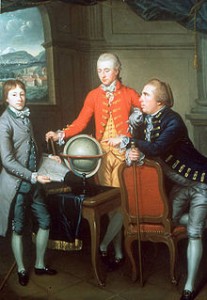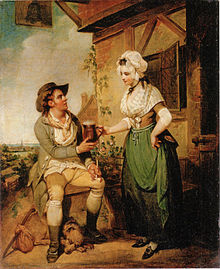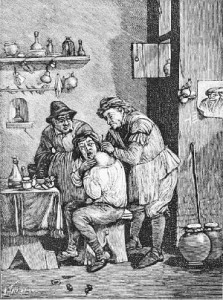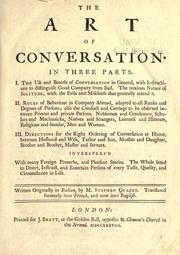By Elizabeth Goldsmith (Regular Contributor)
Books about the art of conversation date back to Cicero, who outlined many of the principles that continue to be promoted in etiquette manuals today. Don’t interrupt, do remember people’s names, be sure to listen and be attentive (or at least pretend to be). In Renaissance Europe, conversation books were published that included actual model dialogues, to give readers an idea of how to talk in polite society.
But in the eighteenth century a new kind of conversation book appeared, this one aimed at travelers who just wanted to make themselves understood. The model dialogues in these books were based on practical problems – how to find a room for the night, how to ask for your favorite food at an inn. As early  tourists began to travel more widely, one of the most pressing problems was learning the essential vocabulary of a foreign language. An educated young Englishman doing the ‘Grand Tour’ in the mid-eighteenth century did not typically learn French, German, Italian, or Spanish in school. Nor would a young Frenchman study English, or a Spaniard German. They all studied Latin.
tourists began to travel more widely, one of the most pressing problems was learning the essential vocabulary of a foreign language. An educated young Englishman doing the ‘Grand Tour’ in the mid-eighteenth century did not typically learn French, German, Italian, or Spanish in school. Nor would a young Frenchman study English, or a Spaniard German. They all studied Latin.
So, the earliest conversation manuals published for travelers provided sample conversations in Latin, the common language of educated people. As the author of Le Guide du voyageur put it, his little book would be of use not only to educated travelers, but also to innkeepers, tradesmen, and even “soldiers who find themselves in foreign lands unable to make themselves understood when they ask for the simplest things.”
 Here’s a sample of some of the useful topics and phrases provided in the first chapter of this guide, published in 1758:
Here’s a sample of some of the useful topics and phrases provided in the first chapter of this guide, published in 1758:
Arriving at the Inn
Innkeeper, do you have good beds? We do not want to feel any fleas or lice. Heus, suntne in diversorio tuo lecti molles? Pulices, cimicesque aversamur.
Have our pistols and trunks taken to our room; and bring us the wine to taste. Jube saccos saccinarios atque sclopetos ad cubile nostrum; & vinum nobis ministrari.
Will we find carriages to rent nearby? Suntne in proxime rhedae conducticiae?
At Supper
What do you think of this wine? Quid tibi hoc vinum placet?
These pigeons are big and fat: take a whole one. Columbi isti sunt corpulenti & pingues: unum ex iis ministra tibi.
No, I’ll give half to my neighbor, pass your plate. Minime, dimidiam partem vicino meo praebebo: orbem porrigere velis.
Taste these sausages. Ede ex istis botellis.
Is this a rabbit pâté? Estne confectum ex lepore?

In Case of Illness
I had a very bad night; I had a fever; I ache all over. Inquietam noctem egi; febri laboravi; dolent universae corporis partes.
You will need to take a remedy. Have you been bled? Clysteribus ciendus est alvus. Justissine sanguinem tibi detrahi?
Departure
Is the road nice? Plana est ne via? Is the road dangerous? Via est ne tuta ab insidis? Do they say there are robbers in the woods? Rumor est latrones in saltu pervagari?
Where is my whip? Ubinam est flagellum meum?
Other sections cover such topics as conversation on a promenade, shopping for meat, discussing the weather, getting good quills and paper for writing letters, getting a shave, caring for horses, playing cards, getting your boots cleaned, and (repeatedly) eating and drinking.
 I wonder if these books were ever used as conversation manuals for pupils learning Latin. I understand that current education reforms underway in France are likely to eliminate Latin from the high school curriculum. Maybe Le Guide du voyageur should be put back into circulation!
I wonder if these books were ever used as conversation manuals for pupils learning Latin. I understand that current education reforms underway in France are likely to eliminate Latin from the high school curriculum. Maybe Le Guide du voyageur should be put back into circulation!
For further reading: Le Guide du voyageur, ou, dialogues en français et en latin. A l’usage des militaires et des personnes qui voyagent dans les pays étrangers. Paris: Guillyn, 1758.

